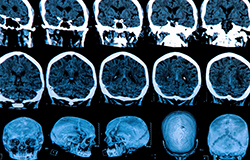Gone in a flash: researchers use light pulses to switch on and off signalling pathways in living cells
The EU-funded R’BIRTH (Brain Imaging Return to Health) project was established to study the molecular mechanisms involved in age-related pathologies. Members of the project team reported recently in the journal 'Nature Communications' that they had successfully used flashes of light to induce resonance in the signalling circuits of mammalian cells, which included a research breakthrough. Using this resonance technique, researchers were able to control when a signalling pathway – which allows cells to interact with their environment – was switched on or off. This is a noteworthy result as these signalling pathways influence the expression of degenerative disease. What makes the finding especially exciting is that it is thought that the same approach could be applied to any cellular circuit. The promise of cell circuit resonance As reported in 'Nature Communications', members of the R’BIRTH project team developed tools called optogenetic inhibitors which use light to control the regulators of cell function known as protein kinases, such as c-Jun N-terminal kinase (JNK). The team demonstrated that delivering a specific frequency of inhibitive light flashes to JNK in the cell’s cytoplasm also resulted in inhibition to gene expression in the nucleus, previously not thought possible. Once frequency timings have been mapped out this opens up the possibility of application to a range of signalling circuits, which could point the way to new therapeutic advances in areas such as cancer treatment. Changing the frequency of inhibition might also prove valuable in the fight against drug resistance, a significant problem for an industry where new drugs cost billions of euros to develop. The research team is now actively pursuing innovations in this area. Understanding the molecular mechanisms for better diagnosis and treatment R’BIRTH has two broad research aims. Firstly, to identify drug treatment targets, along with reagents that could interfere with neurological impairment pathways. Secondly, to create imaging innovations that display depression-associated events in the brain. The project combines biological and medical imaging techniques with behavioural studies and proteomics (the study of proteins) to define the molecular mechanisms of neuronal loss (associated with ageing) and neurogenesis (neuron generation). Biotechnology techniques enable the team to produce new tools that isolate neurogenic cells from the aged brain to help early stage research and will ultimately improve neurodegenerative diagnosis and treatment. As life expectancy increases across the world, so too do age-related health risks, including cognitive decline, depression and anxiety. Based on 2015 figures, the United Nations has forecast that by 2030 there will be a 56 % increase in the number of people in the world aged 60 years or over, taking the total to around 1.4 billion. By 2050, this population is anticipated to more than double its 2015 size, reaching nearly 2.1 billion, with the biggest increase projected to be in the developing world. However, despite the strain on healthcare systems and the potential market this population represents, drug development has not kept apace with demand. Alongside the complexities involved in running clinical trials, one of the reasons cited for this short-coming is a lack of new research avenues to pursue; a gap which the R’BIRTH project helps to fill. For more information, please see: project website
Countries
Finland



